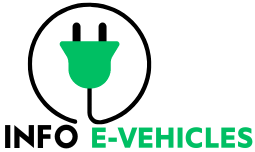In a monumental achievement, Tesla has confirmed the production of its 20 millionth 4680 battery cell at Gigafactory Texas, marking a significant leap in the electric vehicle industry. This feat comes a mere four months after the company announced the production of its first 10 million cells at the same facility.


The Revolutionary 4680 Battery Cell
The 4680 battery cell, introduced in 2020 during Tesla’s Battery Day, emerged as the company’s strategic solution to enhance range, power, and lifespan in its vehicles. Notably, this innovative cell has been in production for several years and is on track to be adopted by third-party manufacturers as early as the upcoming spring.
A Boost for Gigafactory Texas
While these cells have found their way into select Model Y vehicles manufactured at the Texas facility, not all have been outfitted with this cutting-edge technology. Speculation is rife that Tesla might be reserving these cells for its highly anticipated Cybertruck, slated for production and delivery by year-end. Though unconfirmed, this move aligns seamlessly with the all-electric Cybertruck’s profile.
The Road to 20 Million Cells
A staggering 20 million cells equates to the potential assembly of approximately 24,000 Model Y vehicles. This milestone underscores CEO Elon Musk‘s assertion last year that 4680 batteries would play a pivotal role in Tesla’s strategic roadmap for the year.
Cybertruck Speculation
While these cells have found their way into select Model Y vehicles manufactured at the Texas facility, not all have been outfitted with this cutting-edge technology. Speculation is rife that Tesla might be reserving these cells for its highly anticipated Cybertruck, slated for production and delivery by year-end. Though unconfirmed, this move aligns seamlessly with the all-electric Cybertruck‘s profile.
Diversification in Battery Portfolio
The rapid scaling of 4680 cell production represents a pivotal milestone. It is imperative for the company to ensure a steady supply of batteries, particularly as suppliers such as Panasonic gear up for their initial foray into battery manufacturing.
Battery Cell Applications
Recently diversified its battery cell portfolio by introducing a new Model Y configuration featuring LFP cells. This strategic move enables the company to cater to varying range requirements by employing different battery chemistries in different vehicle models. Notably, LFP cells, while holding less density, are ideally suited for standard-range cars.
Ensuring a Steady Supply
- Rapid scaling of 4680 cell production is pivotal for Tesla, as it must maintain a steady supply of batteries.
- This is especially crucial as suppliers like Panasonic gear up for their initial foray into battery manufacturing.
Conclusion
Tesl a’s achievement of producing its 20 millionth 4680 battery cell at Gigafactory Texas marks a significant milestone in the electric vehicle industry. The innovation embodied in the 4680 cell underscores Tesla‘s commitment to pushing the boundaries of battery technology and enhancing the performance of its vehicles. As the company continues to diversify its battery cell portfolio, we can expect further advancements that will revolutionize the EV landscape.
ALSO READ :-
China’s SAMR Issues Urgent Recall for Porsche Taycans affects 2,570 vehicles
Tesla Partners with Outokumpu Oyj to Reinforce Cybertruck Production
SOURCE : TESLARATI
FAQs
What is the significance of the 4680 battery cell?
The 4680 battery cell, revealed by Tesla in 2020, represents a major advancement in battery technology. It is designed to offer enhanced range, power, and longevity in Tesla vehicles, signifying a significant leap in electric vehicle capabilities.
Why might Tesla be reserving the 4680 cells for the Cybertruck?
While unconfirmed, it is speculated that Tesla may be holding onto the 4680 cells for the Cybertruck due to its potential utility in demanding applications like construction, towing, and hauling. This aligns with the cell’s suitability for vehicles requiring higher power outputs.
How does Tesla’s diversification of battery cell chemistries benefit its vehicle lineup?
By employing different battery chemistries in different vehicle models, such as LFP cells for standard-range cars, Tesla can tailor the range and performance characteristics of its vehicles to meet specific market demands and customer preferences. This diversification enhances the versatility of Tesla’s offerings.
